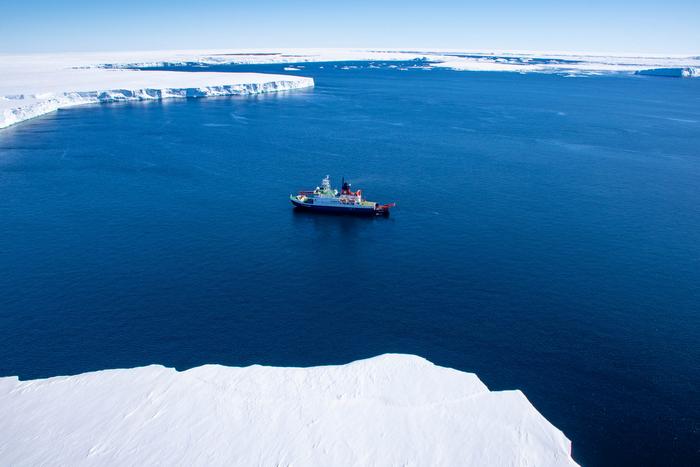After over six months, the research icebreaker Polarstern is returning to Bremerhaven following a successful Antarctic season. The expeditions focused on the oceanography and geology of East Antarctica and included student training. This special mission led to a personnel change in Hobart, marking Polarstern’s first visit to an Australian port in over 40 years.
While the glaciers of East Antarctica are relatively stable compared to those in the west, global warming is altering both sea ice cover and ocean currents. Satellite observations easily track the former, but direct measurements in the water column and deployment of buoys or moorings are needed to study the latter. During the last Antarctic season, scientists aboard the Polarstern conducted detailed studies of current conditions and water composition as part of the EASI expeditions. They also collected sediment cores from the seabed, which provide historical flow data.
Starting at the Denman Glacier in East Antarctica, the Polarstern traveled 2000 kilometers north to 45° south. Water samples were collected approximately every 100 nautical miles at ten stations, measuring oxygen content, salinity, depth, and temperature from the surface to the sea floor, followed by sediment core collection. Dr. Marcus Gutjahr of GEOMAR Helmholtz Centre for Ocean Research, leader of the EASI-2 expedition, stated that such extensive high-resolution samples from this part of the Indian Ocean's Antarctic Circumpolar Current are unprecedented.
Dr. Oliver Esper of the Alfred Wegener Institute added that the sediment cores reveal the Antarctic Circumpolar Current's position over the past 800,000 years. This data shows warm water already reaching and melting the Denman Glacier from below, contributing to rising global sea levels. These findings will improve forecasts of future sea level rise as climate models predict similar scenarios for other parts of East Antarctica.
Following the EASI-2 expedition and Polarstern’s inaugural Australian port call, the EASI-3 expedition led by Prof. Dr. Sebastian Krastel from Kiel University traveled from Hobart to Walvis Bay, Namibia. This expedition focused more on the geology of East Antarctica, using geophysical methods to study past glacier retreats. Researchers examined sediment layers to look back over 50 million years. Additionally, a team from TU Dresden used GNSS to precisely record Earth’s crust movements due to ice mass changes. These measurements, combined with geophysical data, will enhance the understanding of East Antarctica’s geological structure and deformation.
A month ago, Polarstern began its return journey through the Atlantic, led by Simon Dreutter. Along with a small team from the AWI bathymetry department, they mapped the seabed for the GEBCO Seabed 2030 project. Last autumn, the Alfred Wegener Institute used these soundings for student training during a POLMAR graduate school cruise led by Dr. Claudia Hanfland.
The Polarstern will unload its sediment cores and other cargo on Monday, with arrival in Bremerhaven expected around 17:00 on May 12, 2024. The ship will then undergo routine maintenance and repairs at the Lloyd Shipyard for four weeks before departing for the Arctic in early June.
